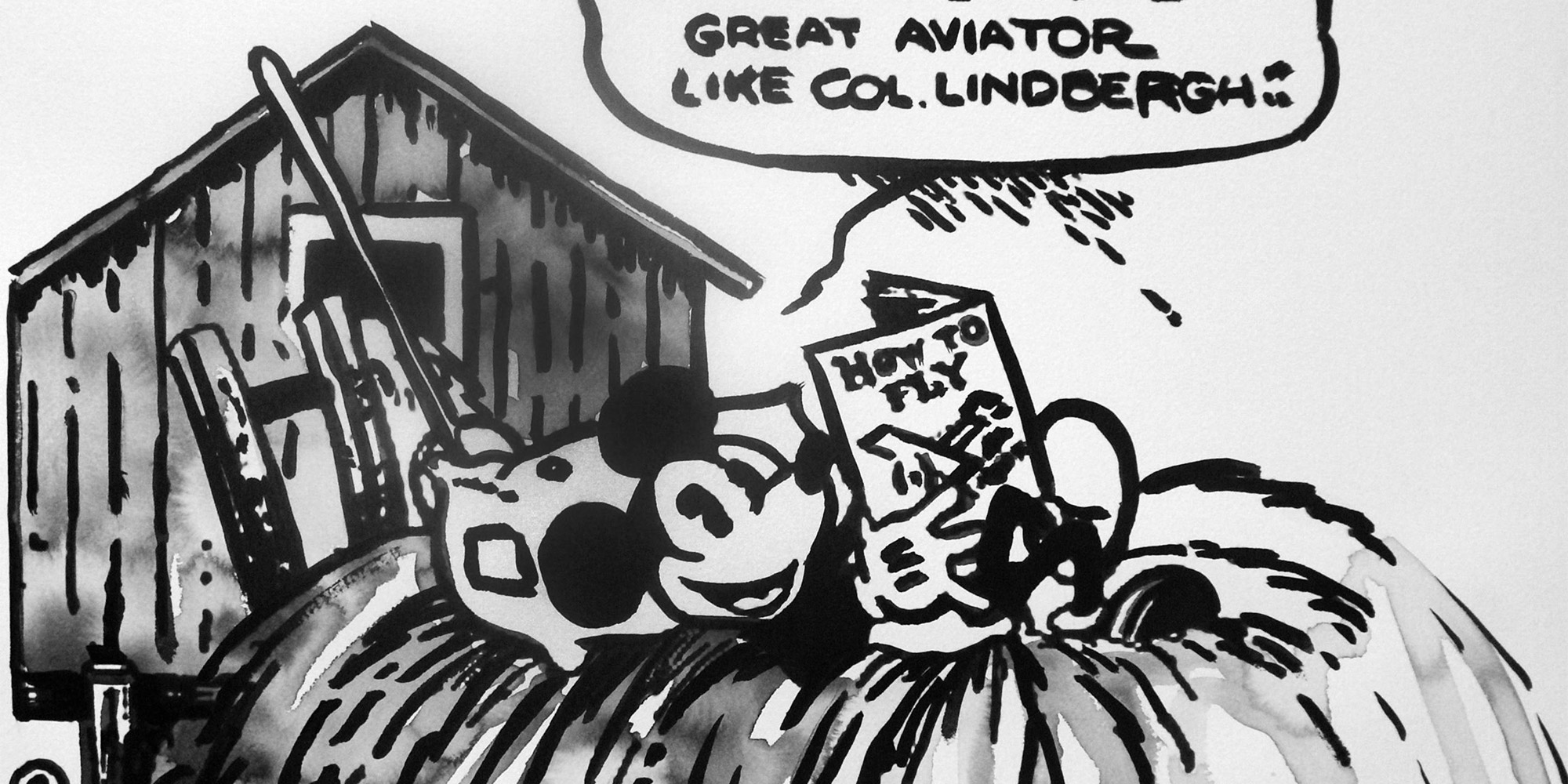
Comics
Source: Wikipedia
Mickey first appeared in comics after he had appeared in 15 commercially successful animated shorts and was easily recognized by the public. Walt Disney was approached by King Features Syndicate with the offer to license Mickey and his supporting characters for use in a comic strip. Disney accepted and Mickey made his first comic strip appearance on January 13, 1930. The comical plot was credited to Disney himself, art to Ub Iwerks and inking to Win Smith. The first week or so of the strip featured a loose adaptation of "Plane Crazy". Minnie soon became the first addition to the cast. The strips first released between January 13, 1930, and March 31, 1930, has been occasionally reprinted in comic book form under the collective title "Lost on a Desert Island". Animation historian Jim Korkis notes "After the eighteenth strip, Iwerks left and his inker, Win Smith, continued drawing the gag-a-day format..."[49]
In early 1930, after Iwerks' departure, Disney was at first content to continue scripting the Mickey Mouse comic strip, assigning the art to Win Smith. However, Disney's focus had always been in animation and Smith was soon assigned with the scripting as well. Smith was apparently discontent at the prospect of having to script, draw, and ink a series by himself as evidenced by his sudden resignation.
Disney then searched for a replacement among the remaining staff of the Studio. He selected Floyd Gottfredson, a recently hired employee. At the time Gottfredson was reportedly eager to work in animation and somewhat reluctant to accept his new assignment. Disney had to assure him the assignment was only temporary and that he would eventually return to animation. Gottfredson accepted and ended up holding this "temporary" assignment from May 5, 1930, to November 15, 1975.
Walt Disney's last script for the strip appeared May 17, 1930.[49] Gottfredson's first task was to finish the storyline Disney had started on April 1, 1930. The storyline was completed on September 20, 1930, and later reprinted in comic book form as Mickey Mouse in Death Valley. This early adventure expanded the cast of the strip which to this point only included Mickey and Minnie. Among the characters who had their first comic strip appearances in this story were Clarabelle Cow, Horace Horsecollar and Black Pete as well as the debuts of corrupted lawyer Sylvester Shyster and Minnie's uncle Mortimer Mouse. The Death Valley narrative was followed by Mr. Slicker and the Egg Robbers, first printed between September 22 and December 26, 1930, which introduced Marcus Mouse and his wife as Minnie's parents.
Starting with these two early comic strip stories, Mickey's versions in animation and comics are considered to have diverged from each other. While Disney and his cartoon shorts would continue to focus on comedy, the comic strip effectively combined comedy and adventure. This adventurous version of Mickey would continue to appear in comic strips and later comic books throughout the 20th and into the 21st century.
Floyd Gottfredson left his mark with stories such as Mickey Mouse Joins the Foreign Legion (1936) and The Gleam (1942). He also created the Phantom Blot, Eega Beeva, Morty and Ferdie, Captain Churchmouse, and Butch. Besides Gottfredson artists for the strip over the years included Roman Arambula, Rick Hoover, Manuel Gonzales, Carson Van Osten, Jim Engel, Bill Wright, Ted Thwailes and Daan Jippes; writers included Ted Osborne, Merrill De Maris, Bill Walsh, Dick Shaw, Roy Williams, Del Connell, and Floyd Norman.
The next artist to leave his mark on the character was Paul Murry in Dell Comics. His first Mickey tale appeared in 1950 but Mickey did not become a speciality until Murry's first serial for Walt Disney's Comics and Stories in 1953 ("The Last Resort"). In the same period Romano Scarpa in Italy for the magazine Topolino began to revitalize Mickey in stories that brought back the Phantom Blot and Eega Beeva along with new creations such as the Atomo Bleep-Bleep. While the stories at Western Publishing during the Silver Age emphasized Mickey as a detective in the style of Sherlock Holmes, in the modern era several editors and creators have consciously undertaken to depict a more vigorous Mickey in the mold of the classic Gottfredson adventures. This renaissance has been spearheaded by Byron Erickson, David Gerstein, Noel Van Horn, Michael T. Gilbert and César Ferioli.
Stay in touch
Hi, I'm Your Name. A short description of your blog. Mickey is a minimal one-column theme for Jekyll. It's designed and developed by @VincentChan.